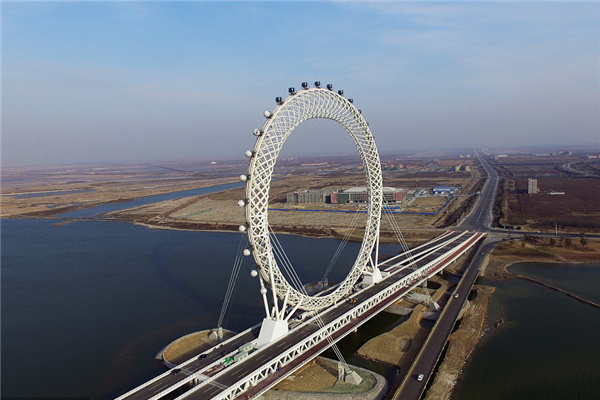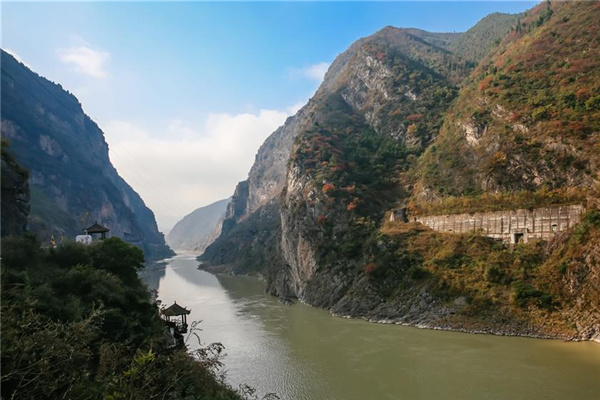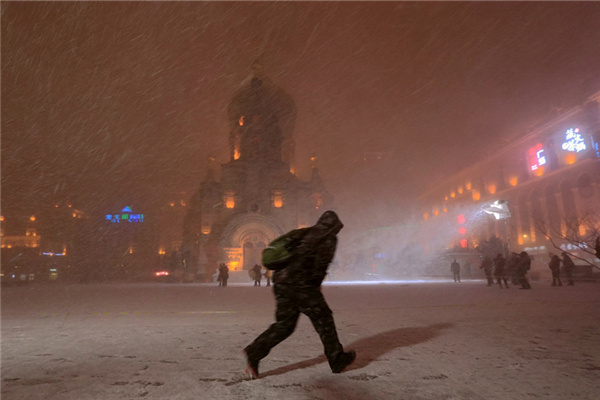

|
Glacier melt on the Tanggula Mountains in Qinghai-Tibet Plateau. |
Global warming is everywhere on the planet, and China is no exception to the scorch.
Statistics say the average temperature of the Earth's surface has increased by 0.74 C over the past century, from 1906 to 2005, and is expected to further rise by 1.1 to 6.4 C by the end of the 21st century.
The rise of global average temperatures since the mid-20th century is mainly caused by the increasing atmospheric concentrations of greenhouse gases, chiefly consisting of carbon dioxide, methane and nitrous oxide, due to human activities, such as fossil fuels and land use such as deforestation.
China's temperature rise has basically kept pace with global warming.
The latest information released by the China Meteorological Administration (CMA) shows that the average temperature of the Earth's surface in China has risen by 1.1 C over the past century, from 1908 to 2007.
China experienced 21 warm winters from 1986 to 2007, the latter being the warmest year since the beginning of systematic meteorological observations in 1951.
But last winter,Hunan, Sichuan province and Guangxi Zhuang autonomous region , also experienced unusual blizzards, snowstorms and freezing rains.
The harsh weather - said to be the worst for half a century in parts of the country - destroyed homes and crops, shut major roads and rail lines, grounded flights and caused power blackouts.
But it was still registered as the 22nd consecutive "warm winter" since mid-1980s, as the average national temperature of the whole winter was still higher than normal, according to Jiao Meiyan, spokesperson from CMA.
And the warming trend is likely to continue this winter, according to a document CMA provided for the Ministry of Agriculture (MOA).
The document, which is on MOA's website, says that the coming winter will be warmer than the previous year, although extreme weather conditions, such as abrupt falls in temperature and snowstorms, are likely to occur in some regions.
Scientific research predicts that climate change trend in China will further intensify, according to a white paper on climate change released by the State Council Information Office last month.
White paper
The white paper identifies possible impacts resulting from climate change as follows: the frequency of extreme climate events is likely to increase; uneven distribution of precipitation will be more visible than before and the occurrence of heavy precipitation will increase; drought will expand in scope; and the sea level will rise faster than ever.
One of the most observed effects is the accelerated melting down of glaciers on the Qinghai-Tibet Plateau.
The Qinghai-Tibet Plateau covers 2.5 million sq km - about a quarter of China's land surface - at an average altitude of 4,000 m above sea level, and has the third largest number of glaciers after the Arctic and Antarctic.
However, in the past 50 years, 82 percent of the plateau's glaciers have melted. The plateau has lost 10 percent of its permafrost layer in the past decade, according to the Chinese Academy of Sciences.
This is already having significant impacts on rivers and runoffs with glacier melt water sources, and it's predicted to have a great impact on the temporal and spatial distribution of water resources all over the country.
The past 30 years have also an accelerating trend of sea levels rising in China, which have also had adverse impacts on the coastal areas.
Over the past three decades, Shanghai has seen the sea level rise 115 mm, or the length of half a chopstick. Tianjin, a major port about two hours' drive from Beijing, has seen the level rise as much as 196 mm, about the length of a new pencil.
The national average rise of sea levels at coastal zones reached 90 mm, causing seawater intrusion, soil salinization and coastal erosion, damaged the marine ecosystems of coastal wetlands, mangrove swamps and coral reefs, and diminished the service and bio-diversity of coastal zones.
Climate change has already produced visible negative effects on China's agriculture and livestock-raising sectors, as the warm winters boost both floods and droughts to the country.
"Warm winters create an environment in which plant diseases and pests thrive, and these pose a serious threat to crops," Xiong Wei, an expert on the correlation between climate change and agriculture with the Chinese Academy of Agricultural Science, tells China Business Weekly.
Warm winter hits wheat
Also, after decades of warm winters, some wheat varieties grown in North China have become less resistant to cold, so if a spring freeze does occur the harvests are hit, Xiong says.
In the recent years, more extreme weather conditions have occurred, such as unbalanced distribution of rainstorms, persistent high temperatures, severe droughts and powerful typhoons.
All these will severely reduce China's grain yield if the current trend of global warming continues, according to a report released by Greenpeace recently.
As much as 50 million hectares of crops in China are threatened by climatic disasters every year, the report says, adding that the impact of climate change could reduce China's overall food production by 23 percent by 2050, if the emission of greenhouse gases continues to be high.
Impacts on natural ecosystems, such as decreased permafrost area, threats to the oasis posed by droughts, and rising frequency of animal and plant diseases have also been predicted.
(China Daily 12/08/2008 page4)













